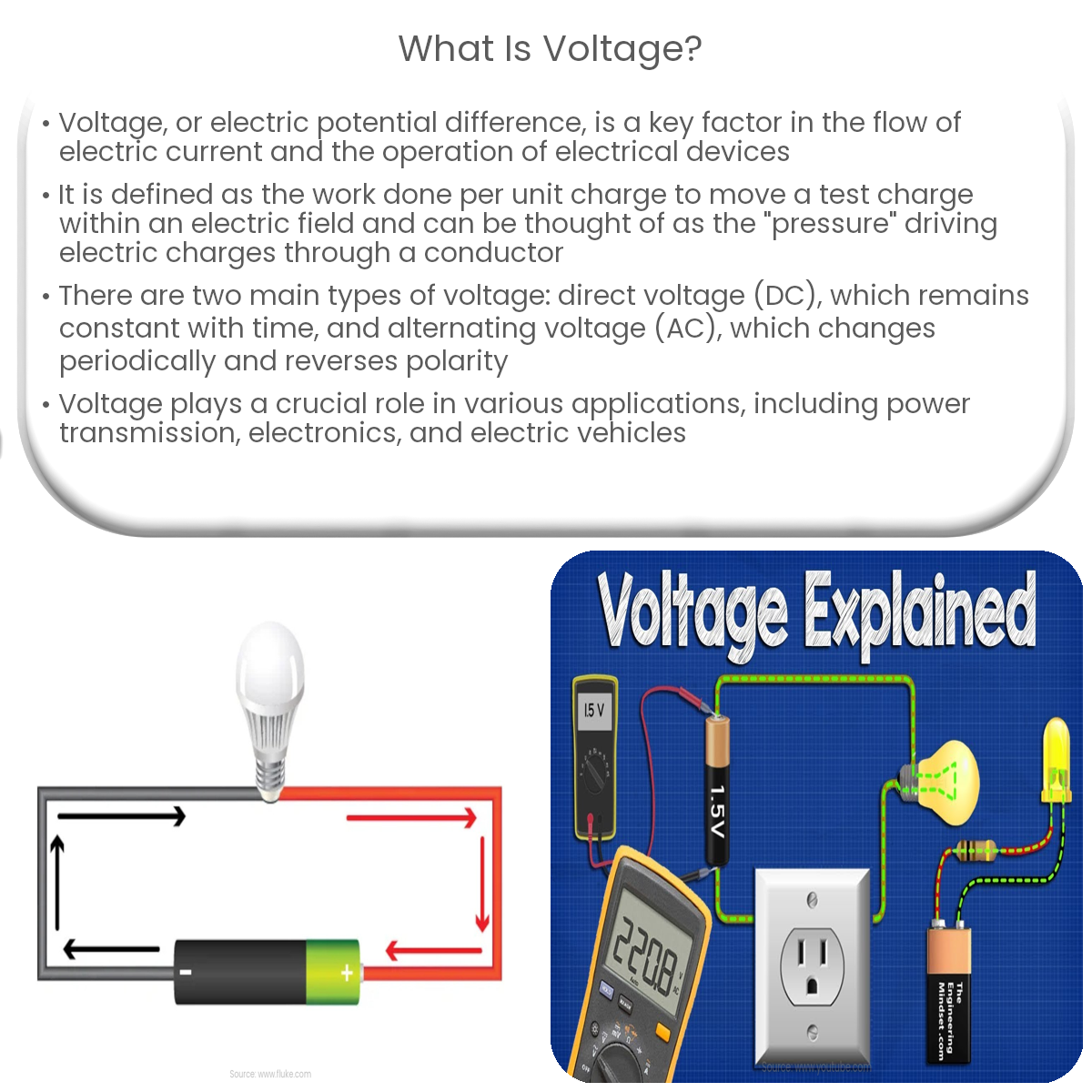Voltage, or electric potential difference, is the measure of electric potential energy per unit charge that drives the flow of electric current.
Introduction to Voltage
Voltage, also known as electric potential difference, is the measure of electric potential energy per unit charge in an electrical circuit. It plays a crucial role in the flow of electric current and the operation of electrical devices.
Defining Voltage
Voltage is defined as the work done per unit charge to move a test charge from one point to another within an electric field:
V = W / q
Where:
Voltage can be thought of as the “pressure” that drives electric charges to move through a conductor, such as a wire, and is a crucial factor in determining the amount of current in a circuit.
Measuring Voltage
Voltage is measured using a voltmeter, an instrument designed to measure the electric potential difference between two points in a circuit. To measure voltage, connect the voltmeter in parallel with the component or section of the circuit for which you want to determine the voltage.
Types of Voltage
There are two main types of voltage:
Voltage in Electrical Circuits
In an electrical circuit, voltage is the driving force that causes electric current to flow. Ohm’s Law, a fundamental principle in electronics, relates voltage (V), current (I), and resistance (R) in a circuit:
V = I * R
This equation states that the voltage across a resistor is directly proportional to the current flowing through it and the resistance of the resistor.
Applications of Voltage
Voltage is an essential concept in various applications, such as:


